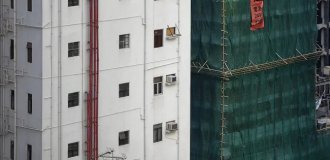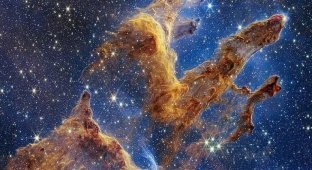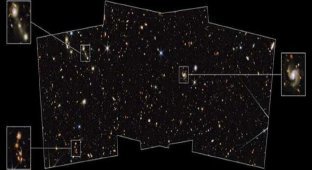How a huge 12-ton telescope was built in the 19th century (6 photos)
About 200 years ago, a dispute arose in the astronomical environment. Charles Messier compiled a list of more than a hundred objects that are indistinct looked through his telescope. Here is such an excellent catalog of nebulae. 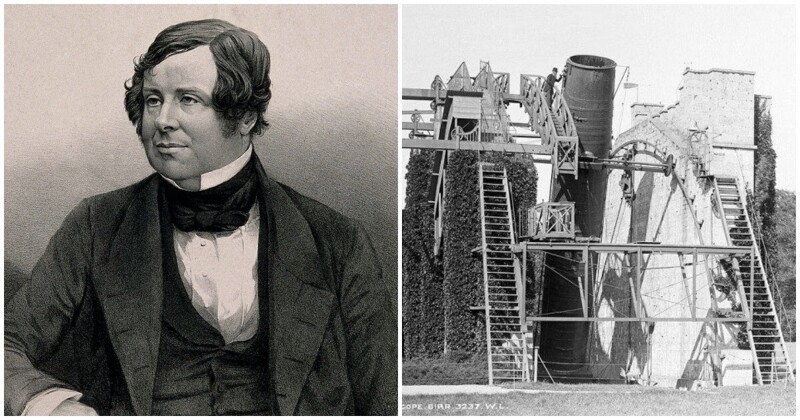
Scientists began to discuss what it could be: clouds gas or clusters of thousands of stars that simply cannot be seen from separately. And the only thing that could be done in this situation - is to build a very large telescope to get a better view of the objects. The Leviathan of Parsonstown became such a telescope. He reminded from afar fortress. 
The telescope was erected on the grounds of Birr Castle in Ireland, where William lived Parsons. He was a mathematician by education, but almost all his life was involved in politics. In the 30s of the 19th century, he returned to the family estate and gave all his time to the construction of means of observation of space space.
In 1841, Parsons inherited the title of Earl of Ross from his father. and decent condition. This is what helped start the construction. telescope that could help clear up the controversy about the nature of nebulae Messier.
In those days, the diameter of the mirror of the largest telescope was only 1.2 meters. Parsons wanted to increase the diameter immediately by 60 cm, which would capture twice as much light. Today these structural elements are made of glass coated on one side a thin layer of aluminum, and in the 19th century a bronze alloy was used, which had excellent reflectivity and easily succumbed to processing.
But in order to make a mirror of the right size, it was necessary melt 4 tons of metal, and then cool the workpiece. A cooling preparations could take from several weeks to four months. 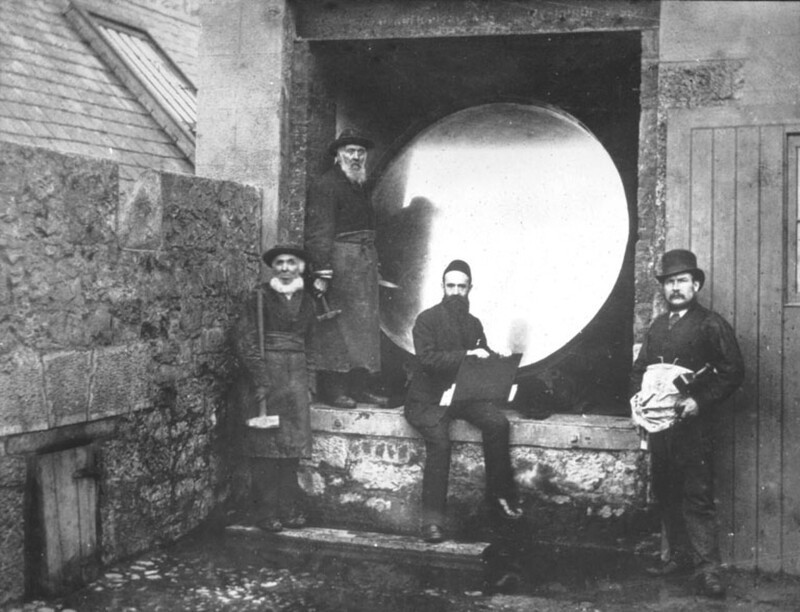
In order for the mirror to focus the light correctly, it it had to be shaped into a perfect parabolic curve. This is usually was done by hand, but Parsons was so inspired by the achievements of the Industrial revolution attracted a steam engine to work, which spun workpiece under the iron grinding tool.
But even with this innovation, polishing such a huge mirror took two months and as many as five attempts. After that it all started again, since the telescope needed two reflective working surfaces. The bronze was rapidly fading, and in order to ensure continuity beyond the cosmos, mirrors had to be changed. 
But this was only the first part of a large project, Parsons with engineers I had to build a wooden pipe 18 meters long. From one end she fastened to the ground and moved along the vertical axis using the system pulleys, which weighed 150 tons. On the sides, the structure was supported by two thick stone walls. The monstrous structure was nicknamed "Leviathan".
The tough outer shell did the job well, but it was also a serious design flaw of the telescope. Pipe moved up and down at almost any angle, but the walls kept her from turn right or left. To view the desired part of the sky had to wait until the Earth turned in the right direction. AT right moment, five people manipulated the pulleys, trying to hold an object in Leviathan's field of vision.
Space observation was also not the easiest thing to do. The art of photography was just beginning then, so astronomers looked at everything with their own eyes, standing in a small cage on top end of the telescope tube. The results were recorded on paper placed on an established easel. The sketches turned out to be quite decent and they helped answer the question about nebulae and produced astronomy real revolution. 
In 1845, a month after the start of observations, Parsons presented sketch of the nebula "Messier 51": a spiral, inside which it was possible guess individual stars. The scientist was sure that the luminaries are moving together, as a whole, and turned out to be absolutely right, because his drawing was nothing more than an image of another galaxy.
After some time, Parsons, his son and their assistants discovered 57 "spiral nebulae", of which 48 turned out to be galaxies. Also im succeeded in definitively proving that the other objects that he discovered Messier, are formed not by stars, but by gas that glows brightly. It turned out such an event, rare for science, when both groups professionals who are completely at odds withabout time, turned out to be equivalent are right. 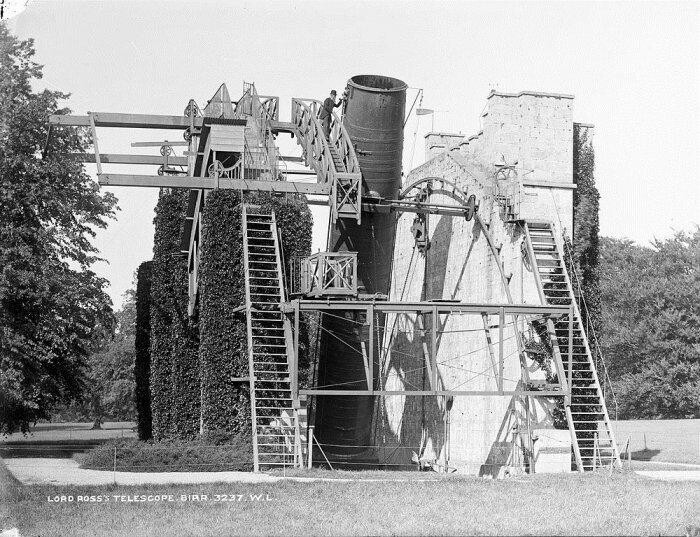
Leviathan today is a museum piece. His work for the benefit of science ended in the 80s of the 19th century.
In 1917, Mount Wilson Observatory in California built telescope with a mirror with a diameter of 2.5 meters. But engineering Count Ross forever remained in the history of astronomy.
"Leviathan of Parsontown" helped resolve the global scientific dispute and proved that the universe is much larger than it seemed before.


